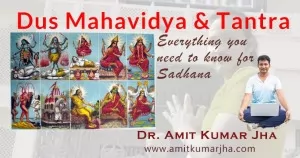The Rising Interest in Tantra: Its Cultural Echoes Across North America and Europe
Explore how the Western world is embracing Tantra beyond stereotypes—through spiritual awakening, wellness trends, and the search for deeper connection.

In recent decades, the Western world has seen a surge of interest in Tantra—not just as an exotic spiritual tradition, but as a transformative life philosophy. While Tantra has long been shrouded in mystery and often misunderstood in mainstream narratives, its deeper, spiritual dimensions are finally finding resonance in North America and Europe.
This shift isn’t just about imported practices. It’s about the West’s evolving desire for depth, authenticity, and reconnection—with the body, the spirit, and with sacred consciousness. Let’s explore how this Eastern wisdom is gently reshaping modern spiritual life in the West.
What Is Tantra? A Spiritual Framework Beyond Stereotypes
The word “Tantra” comes from the Sanskrit root “tan” (to expand) and “tra” (to liberate). Contrary to popular belief, Tantra is not just about sacred sexuality—it is a comprehensive spiritual science aimed at liberation through awareness, energy awakening, and integration of dualities.
Traditional Tantric systems include practices like mantra chanting, meditation, breathwork (pranayama), rituals, and visualizations that help unite the material with the spiritual. In Vedic and Shaiva-Shakta traditions, Tantra is seen as a path of divine union, often involving powerful deities like Kali, Bhairava, Shiva, and Tripura Sundari.
Why the West Is Turning to Tantra
There’s a noticeable spiritual hunger across North America and Europe. Many are turning away from purely institutionalized religion in favor of embodied experiences and individualized connection to the Divine. Tantra, with its inclusive, non-dualistic approach, offers just that.
- Holistic Healing: As mental health and trauma healing become more central, practices like Tantric breathwork and energy healing are being explored in therapeutic and wellness circles.
- Sacred Sexuality: Tantra is helping Western seekers redefine intimacy—not just as pleasure, but as a path to spiritual awakening and vulnerability.
- Mindfulness Expansion: While mindfulness has become mainstream, Tantra deepens it by connecting awareness to energetic and cosmic dimensions.
- Rise of the Feminine: With the resurgence of Goddess worship, particularly Kali and Shakti, Tantra offers a divine feminine-centered spirituality that feels timely and empowering.
How Tantra Is Being Integrated in the West
Workshops, retreats, and online programs in the U.S., Canada, U.K., and Germany are weaving Tantric wisdom into diverse practices—from yoga and therapy to personal coaching and sacred sexuality training. Major cities like Los Angeles, New York, London, and Berlin are emerging as hubs for neo-Tantric communities.
While some purists critique this as dilution, many modern practitioners argue that the essence of Tantra—liberation, expansion, awareness—remains intact. It is evolving, not eroding.
Vedic and Tantric Foundations Still Matter
Despite modern adaptations, a growing number of Western Tantrikas are diving deeper into the roots. They’re learning Sanskrit mantras, respecting lineage-based teachings, and understanding the role of Guru-Shishya parampara (teacher-student tradition).
Vedic Reference: In the Rudra Yamala Tantra, it is said—
“Tantram moolam Guru kripa”— meaning “The root of Tantra is the grace of the Guru.”
This quote reflects how even in modern practice, reverence to lineage and divine guidance remains crucial.
Ethical Concerns and Cultural Sensitivities
With popularity comes responsibility. There are valid concerns about appropriation, sexual misconduct, and misrepresentation. Not all who teach Tantra in the West are initiated, and misinformation can lead to confusion or even harm.
As Tantra spreads, it becomes vital to differentiate between sacred teachings and commodified experiences. Educating seekers about authentic traditions, ethical practice, and spiritual integrity can protect both the wisdom and the student.
Impact on Spiritual Culture in the West
The ripple effects of Tantric influence are profound:
- Greater Body Positivity: Tantra teaches reverence for the body as a temple, challenging Western dualism between body and spirit.
- Deeper Meditation Trends: From Kundalini awakenings to Yantra meditations, Tantric practices are enriching the Western meditation landscape.
- Divine Union: Concepts of Shiva-Shakti union are inspiring relationship models based on balance, presence, and mutual growth.
- Shamanic Parallels: Many North American spiritual circles are merging Tantra with indigenous healing, seeing it as a universal path of consciousness expansion.
Conclusion: A Conscious Fusion, Not Cultural Confusion
Tantra’s spread across the Western world is not a fleeting trend—it’s a spiritual evolution. While challenges of authenticity and ethics remain, its growing popularity reflects a deep yearning for mystical, embodied, and liberating spiritual experiences.
When approached with humility and respect, Tantra can serve as a powerful bridge between East and West, tradition and innovation, individual and cosmos. It’s not about replicating the old, but revering its spirit while making it meaningful for modern seekers.
















